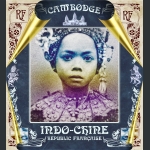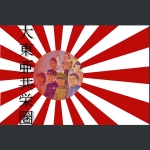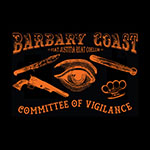- PHOTOGRAPHY GALLERIES
- PHOTOGRAPHY INFORMATION
- DESIGN PORTFOLIO
- DESIGN INFORMATION
- PHILOSOPHY
- INQUIRIES

 CAMBODGE Indochine
Cambodia. This design draws from the look of early stamps. A colored-top layer with gold foil backing is coming off of the aged-paper underneath. The central image is the face of a court dancer, representing an apsara of Hindu and Buddhist lore, from early 20th century Phnom Penh, and is flanked by relief images of an apsara from Angkor ruins in Siem Reap at the other end of the famed Tonle Sap. Above the central image is Angkor Wat itself. The faces at the bottom right and left are from one of the other famed ruins of Angkor, Bayon. The language of the design is French, colonial French (Republic Française) of the early 20th century to be exact, when Cambodia (Cambodge) was a protectorate of the French and part of the latter's greater project of Indochina (Indo-Chine). |
 RIZ Indochine
Indochina Rice. Is a reproduction of an early 20th century colonial French black-and-white advertisement for rice from Indochina adapted by adding colors of the French flag. |
 JAPAN World War II
Greater East Asia Co-Prosperity Sphere. Based on a World War II-era Japanese propaganda booklet aimed at Asian children, the front image combines the Japanese rising sun with an image of children from different countries standing together in support of the Japanese Imperial project, The Greater East Asia Co-Prosperity Sphere. The back image is a more direct narrative showing Great Britain's Winston Churchill and the United States' Franklin D. Roosevelt looking vexed as their colonies and areas of control in Asia are being "liberated" by the Japanese. Meanwhile, local populations are depicted cheering on the Japanese. Note that Japan and its possessions in Manchuria, Korea and Taiwan are colored in red and the oil derrick and silos on the island of Borneo with the Japanese flag flying from them. |
 NEDERLANDS OOSTINDIEN
Netherlands East Indies. The East Indies referred broadly to what is today South and Southeast Asia. (front) The Netherlands East Indies (Nederlands Oostindien in Dutch) or Dutch East Indies was the name the Dutch gave to their colonial possessions of what is now Indonesia (and, at times, posts in India and Japan). Batavia (what was formerly known as Jayakarta and is now Jakarta) was the capital of these possessions and was founded as such in 1619 (Batavia werd opergericht in 1619). (back) This collage includes two Javanese keris, one on the top and the other on the bottom, which traditionally serve as a spiritual talisman as well a weapon for Javanese and several other ethnic groups in the archipelago. A wayang performer stands in a classical dance pose above a map of Central Java, the heart of Javanese culture. Clockwise from upper right is a picture of a priyayi, or Javanese nobleman and his servant, a Balinese dancer, three Balinese women as they dressed prior to independence, a wayang kulit (shadow puppet), a picture of Dutch and native conscripts with a cannon, Javanese boys reading a newspaper, young Javanese noblemen, and an picture of an attack on the Acehnese by Dutch-led forces under future Governor General, Johannes Benedictus van Heutsz. The ship and soldier in the upper left are images of the Dutch and their typical ships about the time of the conquest of Java from the seventeenth to eighteenth centuries. The map was printed in the mid-nineteenth century. All photos are from the early twentieth century. |
 COMMITTEE OF VIGILANCE
THE COMMITTEE OF VIGILANCE, BARBARY COAST. In the immediate aftermath of the Gold Rush, San Francisco was the lawless Barbary Coast. Before the civic institutions were developed to match pace with the burgeoning city, the wealthy organized a rapid response to the lawlessness with summary justice. This shirt asks what if time enveloped and members of the Vigilance Committee wore a t-shirt to represent their temporary "institution". The t-shirt includes their symbol of a watchful eye, the latin phrase they used: fiat justitia ruat coelum (Let justice be done though the heavens fall), and implements of mob rule: a club, brass knuckles, a period hand gun, and hangman's noose. |

copyright john shea o'donnell